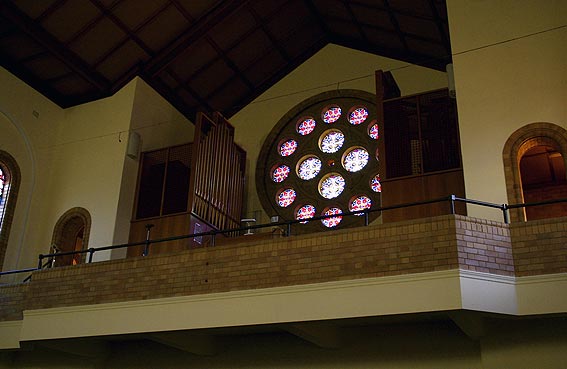St Christopher's Catholic Cathedral
Franklin Street, Forrest (Manuka)
1968 Hill, Norman & Beard, installed present location 1972 & enlarged 1973
2 manuals, 28 speaking stops (8 ranks + mixture extended), 3 couplers, electro-magnetic action
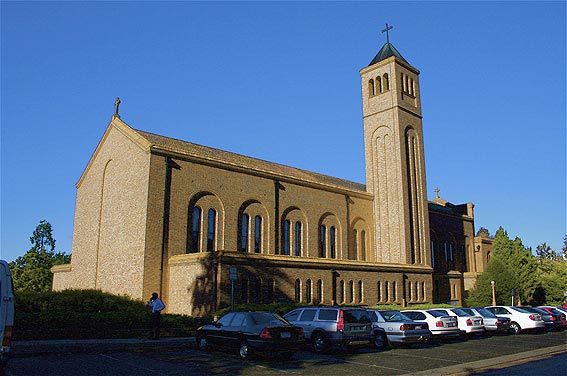
Information from Kelvin Hastie, “St Christopher’s Catholic Cathedral, Franklin Street, Manuka”, Capital Organs. Organ Historical Trust of Australia, 24th Annual Conference, 29 September – 4 October 2001. Canberra and South East New South Wales. Conference Booklet (Sydney: Organ Historical Trust of Australia, 2001), pp. 43-44.
St Christopher's was originally part of St Gregory's Parish, Queanbeyan, until 1912. (Queanbeyan was in the archdiocese of Sydney till 1918 when it was transferred to the Diocese of Goulburn on the forming of the diocese of Wagga Wagga). In 1927 a foundation stone for a school-cum-church was laid.
In 1930 a cathedral was proposed for the site behind Regatta Point, but the Depression and World War II made this impractical. In 1928 St Christopher's became an independent parish. In 1948 the Diocese of Canberra and Goulburn was created and St Christopher's came to be called a pro-cathedral, even though still a parish church. When Archbishop Eric O'Brien took up residence in Canberra it was called a Co-cathedral with SS Peter and Paul, Goulburn.
The church was extended to twice its size in 1973, holding 1000 worshippers, and was consecrated as the Cathedral Church of the Diocese, superseding SS Peter & Paul. The present pipe organ was built by Hill, Norman & Beard (Melbourne) and was used by St James' Anglican Church, King Street, Sydney, whilst their organ was being rebuilt. Its size was doubled when installed on the gallery 26 September 1972. There are 1100 wood and metal pipes contained in two cases on either side of the rose window.
Peter Jewkes has supplied the following information (23 January 2024) and has added the extension details to the specification below.
It is a slightly tricky specification, and is really either 8 ranks including 2 Mixtures, or 11 ranks if you include the extra Mixture pipes. It isn't 8 ranks extended either, as at least 3 ranks are not extended.
These are the ranks (with some annotations):
GREAT SIDE (New 1973 apart from Open, including matching case. Voiced by John S Parker, Melbourne)
A Open Diapason 8 Was on other side with original organ, outside the Swell box, extended at various pitches
B Rohr Gedeckt 8
C Principal 4
D Mixture III 19 22 26 61 notes, 183 pipes
SWELL SIDE (Original factory organ)
E Salicional 8
F Gedeckt 8
G Mixture II 26 29 Rewired from original 19.22 format in 1973. 3 octave compass, due to rewiring now from bottom C to treble C then electrically repeating. 111 pipes
H Trumpet 8
GREAT
Contra Salicional TC
Open Diapason
Rohr Gedeckt
Principal
Nason Flute
Quint
Fifteenth
Mixture 19.22.26.
Trumpet
SWELL
Salicional
Gedeckt
Fugara
Lieblich Flute
Block Flute
Larigot
Octavin
Mixture 26.29.
Trumpet
Tremulant
PEDAL
Sub Bass
Octave
Flute
Salicional
Super Octave
Octave Flute
Nachthorn
Mixture
Trumpet
Clarion
COUPLERS
Swell to Great
Great to Pedal
Swell to Pedal
|
16
8
8
4
4
2-2/3
2
III
8
8
8
4
4
2
1-1/3
1
II
8
16
8
8
8
4
4
2
III
8
4
|
E
A
B
C
B
B
C
D
F
E
G
E
G
G
G
E
H
F
B
A
B
E
C
B
B?
D
F
F
|
[1] Information supplied by Geoff Wells, February, 2001.
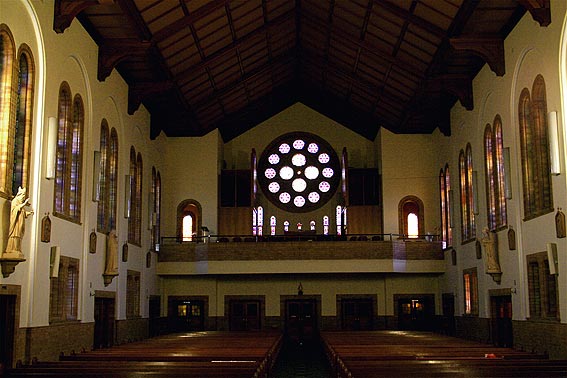
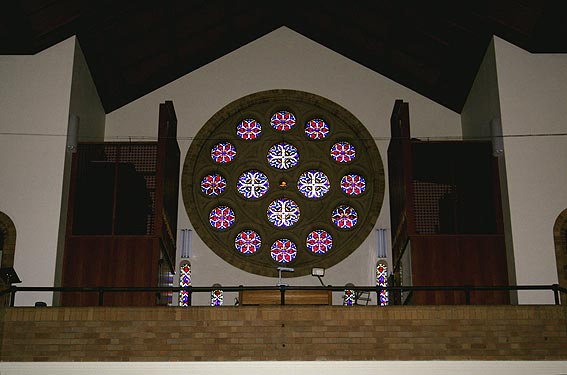
Photos supplied by Trevor Bunning (April 2006)
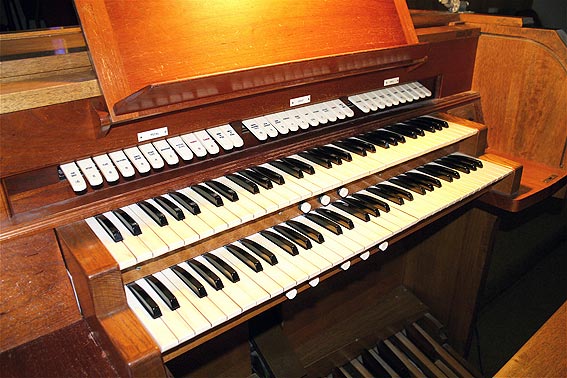
Detached console in the gallery
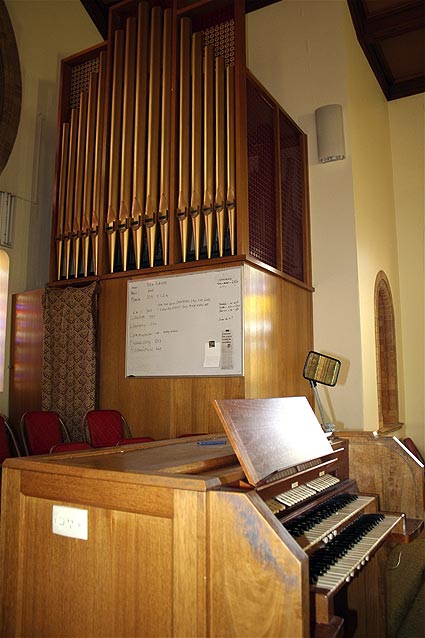
Great side façade pipes
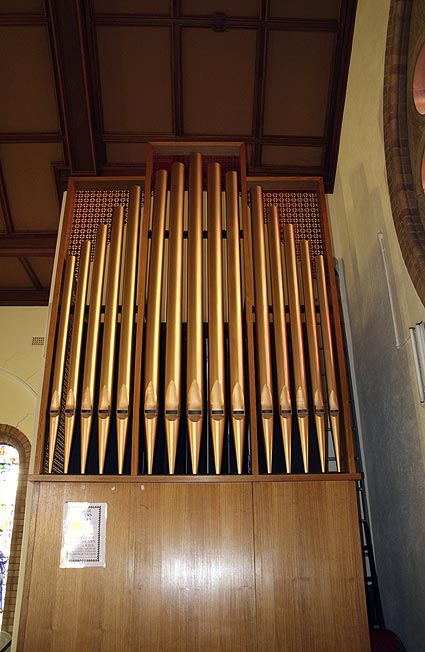
Swell Pipework
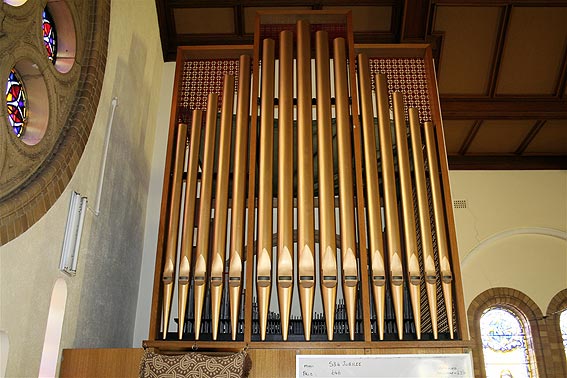
Great Pipework
Photos supplied by Trevor Bunning (May 2007)

